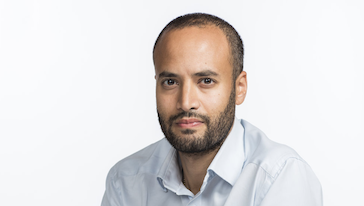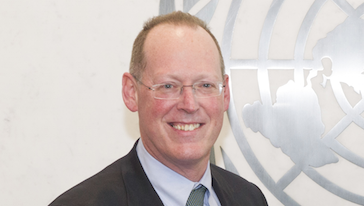The event was moderated by Mario Calderini, Professor at Politecnico di Milano School of Management, Director of Tiresia, Research Centre for Impact Finance and Innovation, and current member of the Italian government’s Task Force on Social Impact Investment.
The event started with welcome messages by the moderator prof. Mario Calderini, by Emilio Paolucci (director of the ASP), Gabriella Fesus (EC, DG Development and International Cooperation) and Jan Szczycinski (UNDP). After welcomes, two pre-recorded videos by Andrew Bastawrous were played. In these videos, he explained that his motivations for first becoming an eye-doctor and then establishing Peek Vision, was a sense of injustice for the many people in poor countries who are blind or have poor vision due to diseases that we already know how to cure or prevent.
Children with poor sight may look lazy and appear as though they do not pay attention at school. They grow up believing all these things while the reality is that the world they see is out of clarity. Andrew revealed that he himself grew up with very short eyesight and received his first pair of glasses when he was about 12. This changed his world and from this experience he understood that clear vision corresponds to many opportunities, such as education and ability to socialize.
In 2012 he moved with his family to Kenya, where, similar to other developing countries, most of the resources for eye care were in the big towns and cities, while most patients who needed them lived in rural areas. An option would have been to take the eye care equipment to communities. However, such equipment were sensitive, heavy, costly and needed about 15 people to be moved to the communities. Communities also suffered scarcity of electricity, therefore, that option had poor feasibility.
Andrew’s entrepreneurial idea was to recreate the tests done in the clinic on a smartphone and to simplify the process so that a rather complex test could be delivered anywhere to anyone, with the results shared with specialists who then decide whether to treat the patient or not.
This novel approach was initially tested at schools, where teachers were trained to do vision testing on children to pre-identify those with low vision. For every child identified as having a vision problem, a text message was sent to parents and to head teachers with instructions on what to do next. This approach allowed capillary screening without increasing the load on already overburdened hospitals and nurses.
The system was initially tested on 21,000 children who were screened by only 25 teachers in 9 days. 900 of them were found to be visually impaired. The program was then scaled up to cover the whole county. 160,000 more children were screened and treated if they had a problem. Today, the program is being extended to other parts of Kenya and to countries such as Botswana and India.
As he concluded the lecture, Andrew stressed that an important part of the program implementation was understanding why some patients who needed treatment exited the program without being treated. Thankfully, this information could be got through data collection and smartphone technology and it helped program planners and implementers make appropriate decisions locally.



